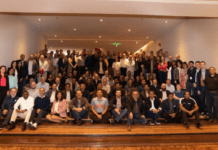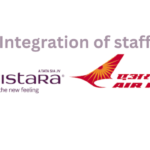Effective communication is the key to instilling positivity in employees, in addition to reskilling, coaching and mentoring programmes.
Change is inevitable. It’s part of the evolution of an organisation as well as its employees.
Many a time, a good manager, similar to a good coach, would identify the true potential of employees and push them to take on more responsibilities and even change roles or functions. At times, companies move people to different functions and newer territories just to fulfill business needs.
However, not all employees take such changes optimistically. But, there are champs who fight against odd situations and emerge as winners armed with more capabilities, knowledge and expertise. These people generally grow up to become leaders.
Then, there are also the pessimists, who see any change as the biggest debacle of their life.
It’s a tricky situation, and organisations find it challenging to manage such people and situations. Despite all good intentions, and knowing that a change would only benefit the employee’s career, organisations often go the wrong way.
Prince Augustin, executive vice president-group human capital & leadership development, Mahindra & Mahindra, says, “The organisation has to prepare the candidate for the transition, which has to be handled with care, sensitivity and compassion. Conversation has to be structured around any change in the profile by explaining the reasons, and how it will impact the candidate.”

The organisation has to prepare the candidate for the transition, which has to be handled with care, sensitivity and compassion. Conversation has to be structured around any change in the profile by explaining the reasons, and how it will impact the candidate.
What organisations need to communicate is that the suggested change is in the best interest of the employees, as staying relevant in the competitive world is extremely important.
“Yes, change in job role may be perceived as the candidate being sidelined or moved away from the mainstream job or reduced to a less important role. Hence, it is very important to communicate the intent to the employees and make them feel valued in the organisation, for positive impact,” says Karan Makhania, CHRO, Reliance Health Insurance.

To ensure seamless role changes, organisations must establish ‘preferred corridors’ for each function. Preferred corridors are career paths between two functions, which have similar skill set needs, and hence, role transition between these functions is easier.
Communication is critical and the organisation has to explicitly and extensively communicate the need for change, the approach being followed to bring about the change, and how the change is going to positively impact employees’ relevance and organisation’s sustainability.
Any sudden and unplanned change leads to anxiety, low productivity and possible attrition risk due to the fear of the unknown.
It’s also true that organisations often get caught in the cusp of big environmental changes and there is little time to prepare the person for the shift.

Change in job role may be perceived as the candidate being sidelined or moved away from the mainstream job or reduced to a less important role. Hence, it is very important to communicate the intent to the employees and make them feel valued in the organisation, for positive impact.
“To ensure seamless role changes, organisations must establish ‘preferred corridors’ for each function,” suggests Paramjit Singh Nayyar, CHRO, Apollo Munich Health Insurance.
“Preferred corridors are career paths between two functions, which have similar skill set needs, and hence, role transition between these functions is easier, for example, finance and supply chain, HR and CSR, sales and marketing. This eases out the challenges of transition to a large extent. Besides all this, career-transition coaches in the organisation can provide unbiased and trusted advice to employees on role changes,” Nayyar explains.
Organisations need to ensure they have clearly established capability-building interventions that enable employees to reskill themselves in the defined timeframe, as per the organisation’s requirement.
Value our content... contribute towards our growth. Even a small contribution a month would be of great help for us.
Since eight years, we have been serving the industry through daily news and stories. Our content is free for all and we plan to keep it that way.
Support HRKatha. Pay Here (All it takes is a minute)




































